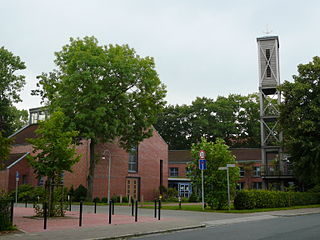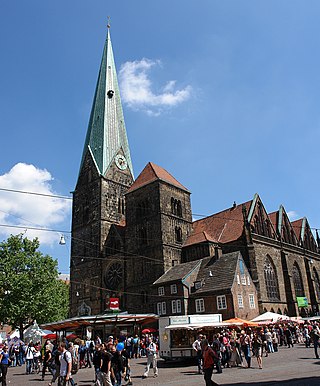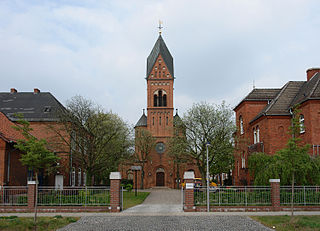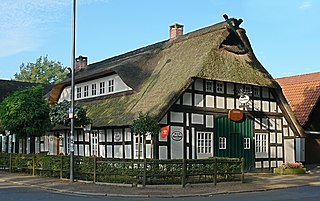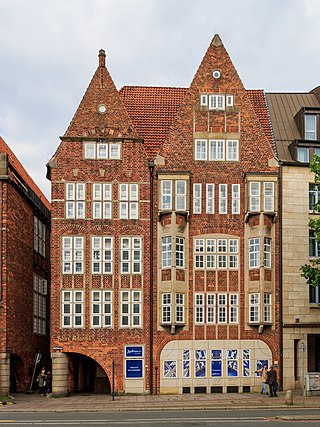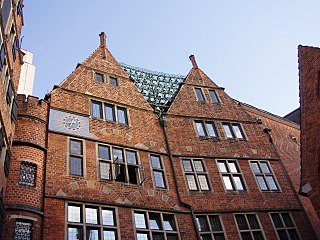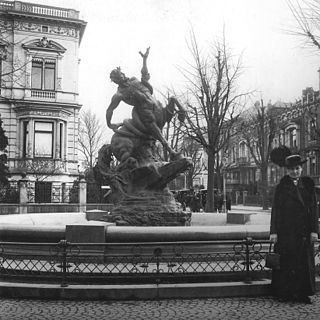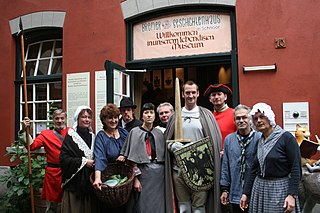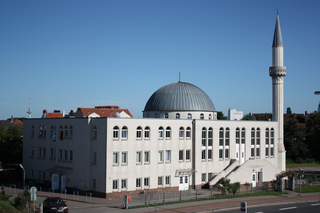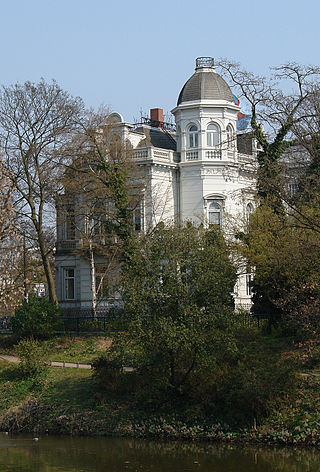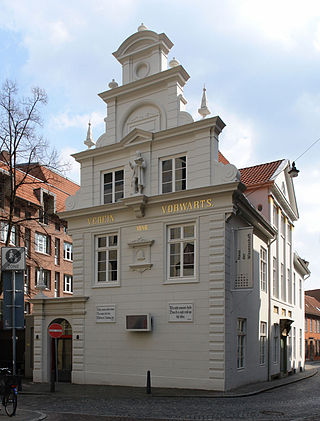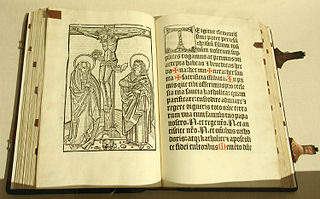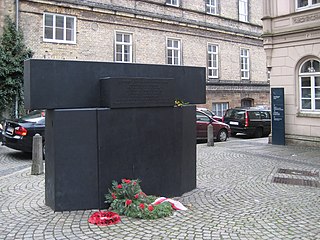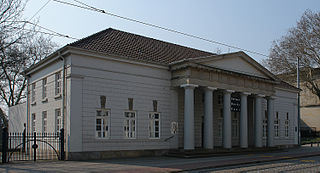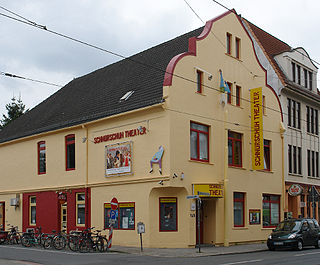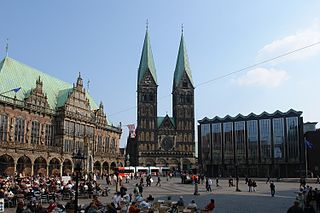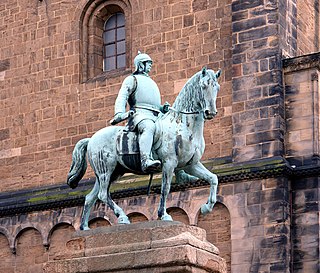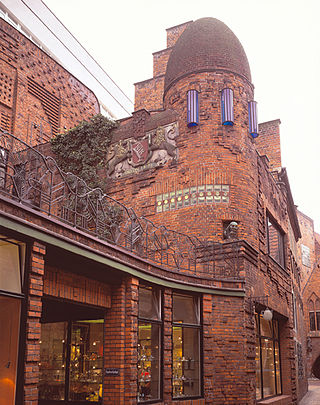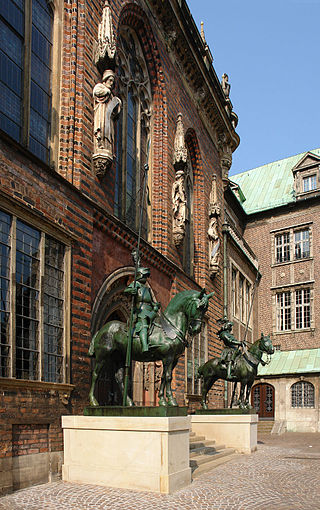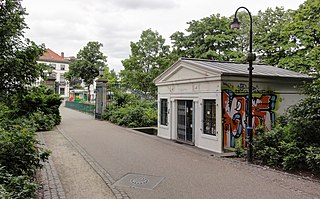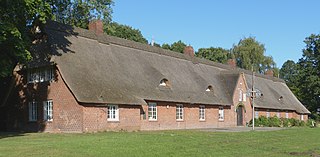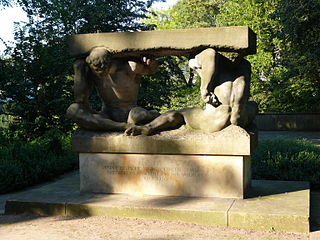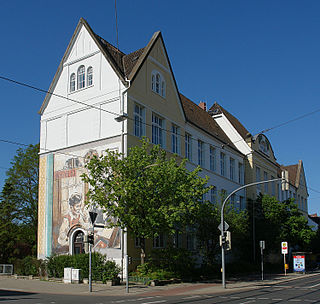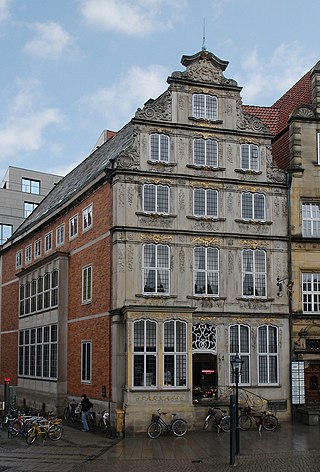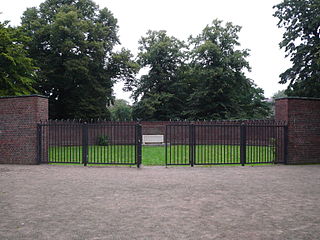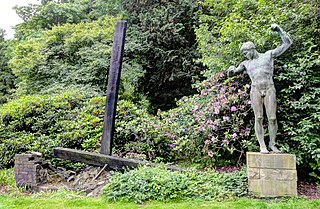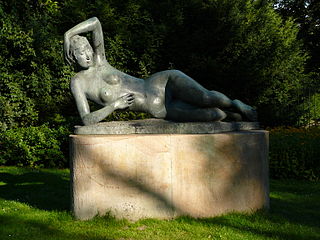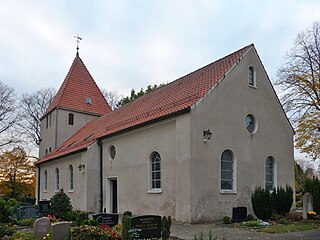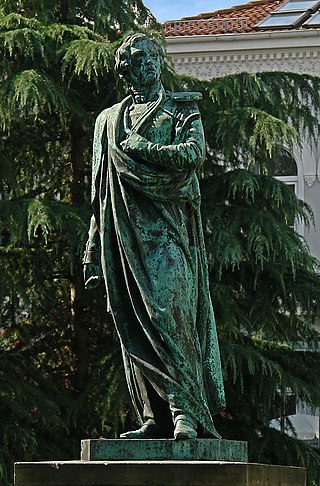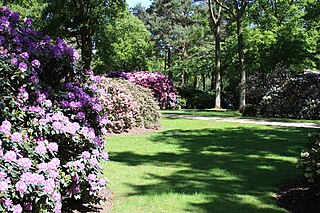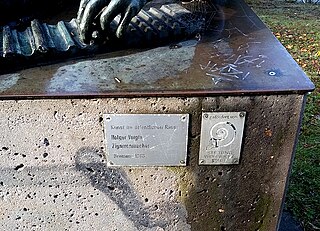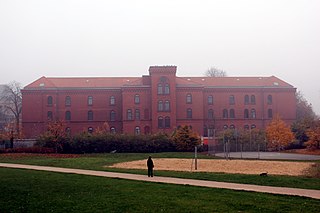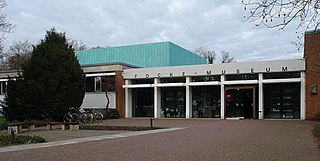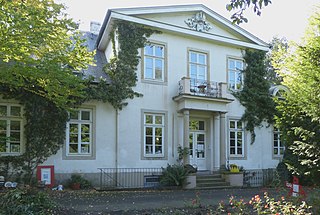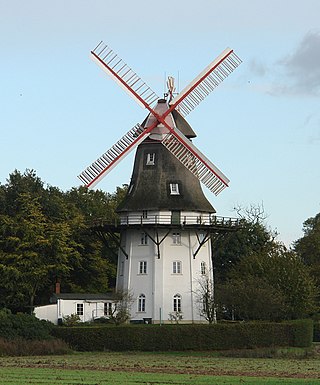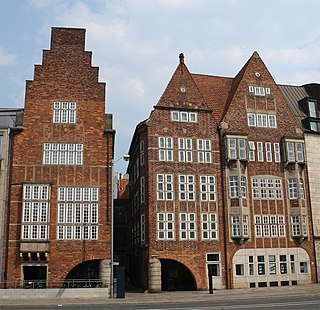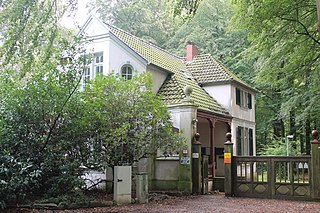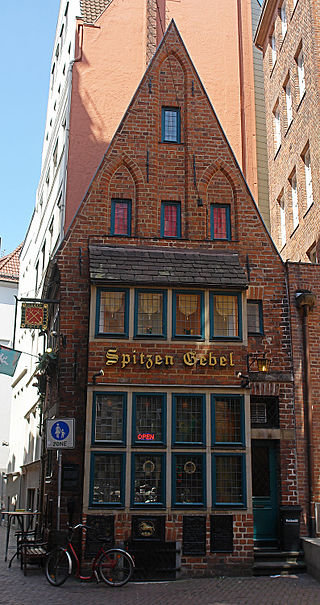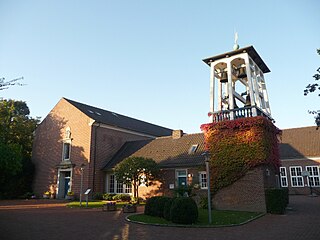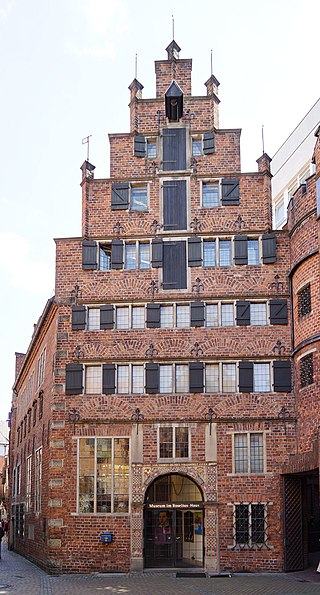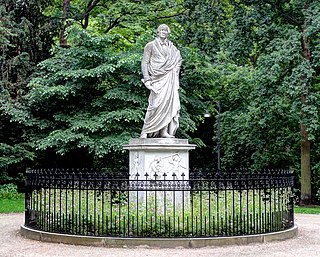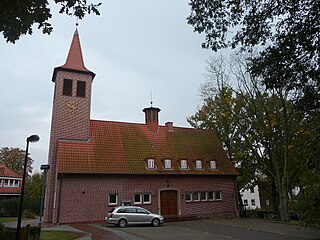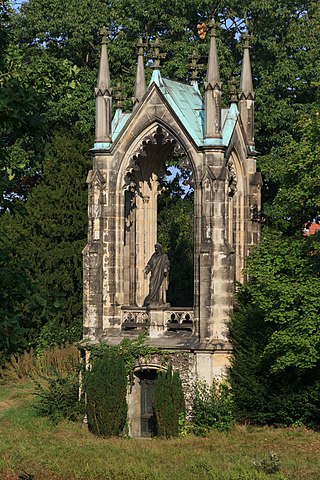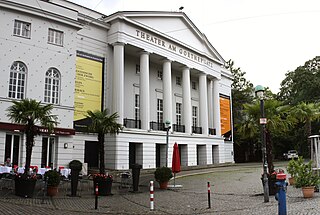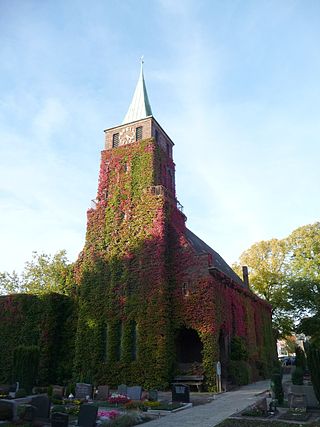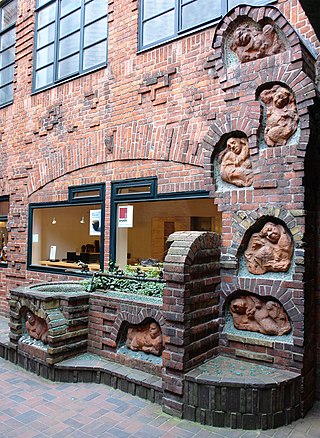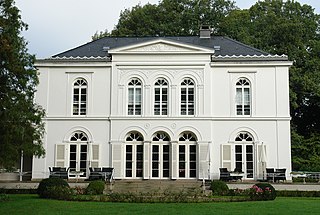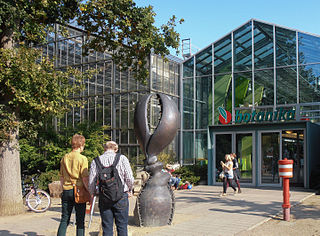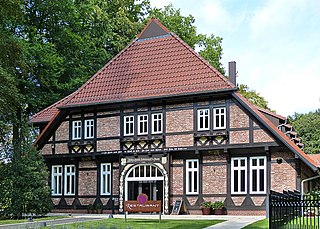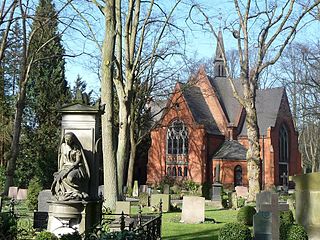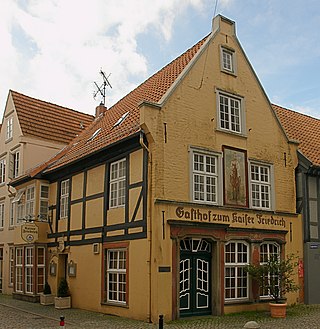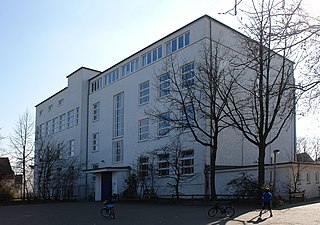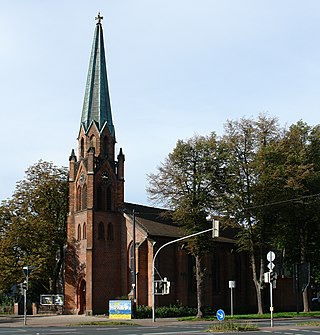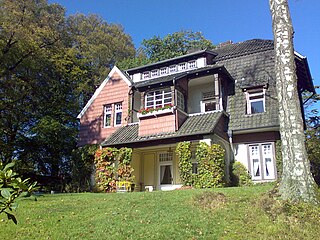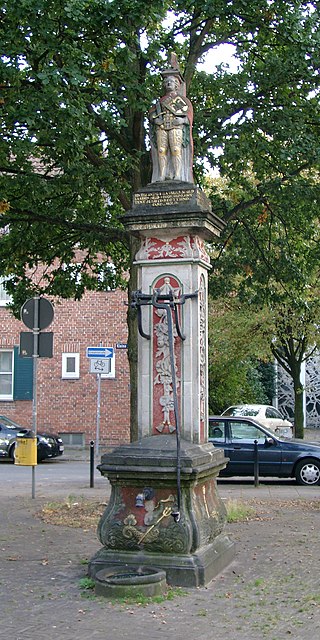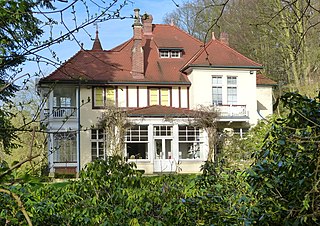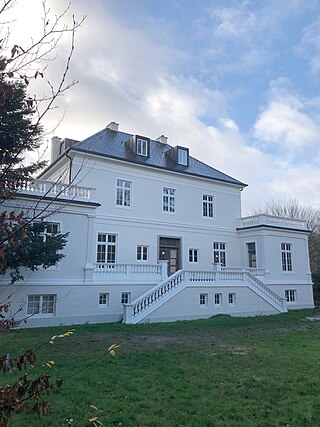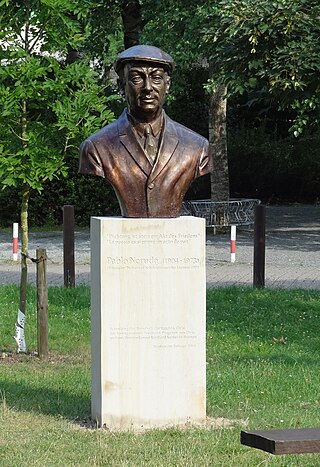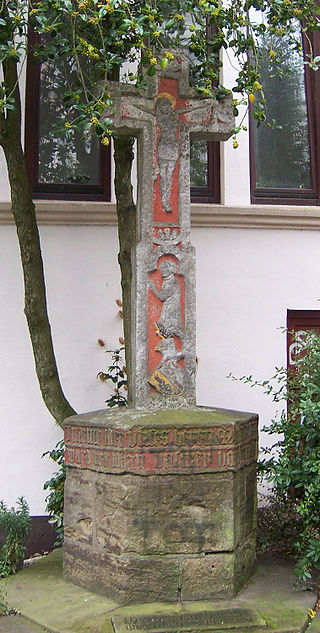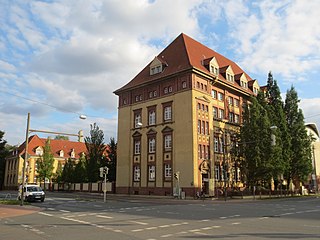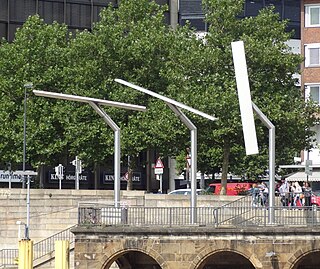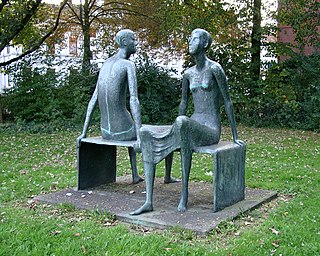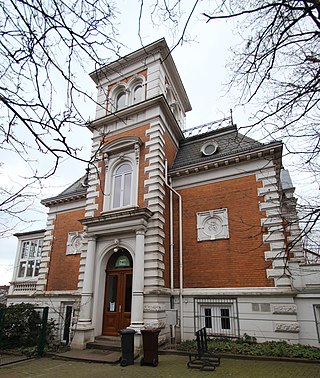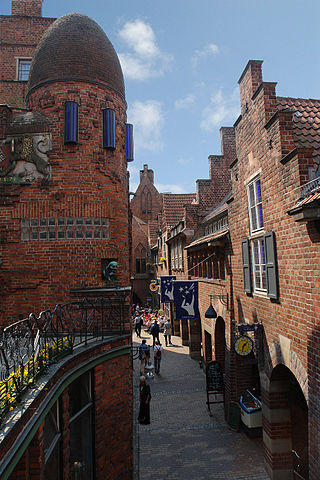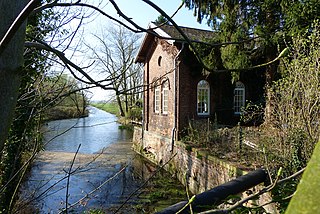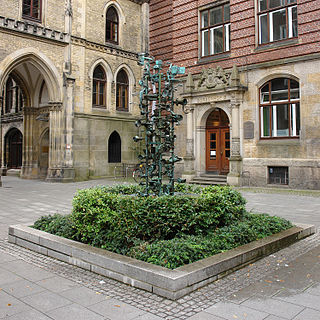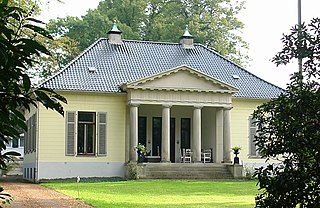100 Sights in Bremen, Germany (with Map and Images)
Legend
Premium Sights
Book tickets, guided tours and activities in Bremen.
Guided Free Walking Tours
Book free guided walking tours in Bremen.
Welcome to your journey through the most beautiful sights in Bremen, Germany! Whether you want to discover the city's historical treasures or experience its modern highlights, you'll find everything your heart desires here. Be inspired by our selection and plan your unforgettable adventure in Bremen. Dive into the diversity of this fascinating city and discover everything it has to offer.
Sightseeing Tours in BremenActivities in BremenBremen Cathedral, named after St. Peter, is a church situated in the market square in the center of Bremen. The cathedral belongs to the Bremian Evangelical Church, a member of the umbrella organization Protestant Church in Germany. It is the previous cathedral of the former Prince-Archbishopric of Bremen. Since 1973, it is protected by the monument protection act.
2. Böttcherstraße
Böttcherstraße is a street in the historic centre of Bremen, Germany. Only about 100 m (330 ft) long, it is famous for its unusual architecture and ranks among the city's main cultural landmarks and visitor attractions. Most of its buildings were erected between 1922 and 1931, primarily as a result of the initiative of Ludwig Roselius, a Bremen-based coffee-trader, who charged Bernhard Hoetger with the artistic supervision over the project. The street and its buildings are a rare example of an architectural ensemble belonging to a variant of the expressionist style. Several of the houses can be classed as Brick Expressionism. Since 1973, the ensemble has been protected by the Monument Protection Act.
3. Roland
The Bremen Roland is a statue of Roland, erected in 1404. It stands in the market square (Rathausplatz) of Bremen, Germany, facing the cathedral, and shows Roland, paladin of the first Holy Roman Emperor Charlemagne and hero of the Battle of Roncevaux Pass.
4. Valentin submarine pens
The Valentin submarine factory is a protective shelter on the Weser River at the Bremen suburb of Rekum, built to protect German U-boats during World War II. The factory was under construction from 1943 to March 1945 using forced labour, but was damaged by air-raids and unfinished by the end of the war. The Valentin factory was the largest fortified U-boat facility in Germany, and was second only to those built at Brest in France.
5. Reformierte Kirche Blumenthal
The Evangelical Reformed Church in Bremen-Blumenthal is one of the four churches of the merged Protestant congregation of the district, which has existed since January 1, 2022. The predecessor parish, the Ev.-ref. Parish of Bremen-Blumenthal, was reorganized on 8 June 1959 into the Bremen Evangelical Church (BEK). The merged municipality is also a member of the BEK.
Wikipedia: Evangelisch-reformierte Kirche (Bremen-Blumenthal) (DE), Website
6. Blindengarten
A sensory garden is a self-contained garden area that allows visitors to enjoy a wide variety of sensory experiences. Sensory gardens are designed to provide opportunities to stimulate the senses, both individually and in combination, in ways that users may not usually encounter.
7. Kunsthalle Bremen
The Kunsthalle Bremen is an art museum in Bremen, Germany. It is located close to the Bremen Old Town on the "Culture Mile". The Kunsthalle was built in 1849, enlarged in 1902 by architect Eduard Gildemeister, and expanded several more times, most notably in 2011. Since 1977, the building has been designated a Kulturdenkmal on Germany's buildings heritage list.
8. Rosen für die Opfer
The Bahrsplate concentration camp was one of the more than 85 subcamps in Bremen-Blumenthal of the National Socialist concentration and main camp Hamburg-Neuengamme. It was set up at the end of August 1942 in the western part of a Deschimag camp on the site of the former Volkspark on the former Weser island of Bahrsplate.
9. Alexander von Humboldt
Alexander von Humboldt is a German sailing ship originally built in 1906 by the German shipyard AG Weser at Bremen as the lightship Reserve Sonderburg. She was operated throughout the North and Baltic Seas until being retired in 1986. Subsequently, she was converted into a three masted barque by the German shipyard Motorwerke Bremerhaven and was re-launched in 1988 as Alexander von Humboldt. In 2011 the ship was taken off sail-training and sent to the Caribbean for the charter business, then she was converted to a botel.
10. St. Johannes Arsten
The Protestant parish church of St. Johannes, also known as St. Johannis or St. Johannes the Baptist in Bremen, district of Obervieland, district of Arsten, Arster Landstraße 51, built around 1250, is one of the oldest churches in Bremen. This building has been a Bremen listed building since 1973, as have the rectory from 1853, the catechesis house and the parish garden since 1993.
11. Schloss Schönebeck
Schloss Schönebeck is a moated castle in Bremen-Vegesack, in the district of Schönebeck. It lies in the valley of the Schönebecker Aue, a Geestbach stream that flows into the Weser via the Vegesack harbour, which was dammed into a pond in the area of the castle.
12. Wasserkunst
The water tower on the Werder on Werderstraße is the oldest water tower in the city of Bremen. The 47-metre-high building – popularly known as the "upside-down chest of drawers" – on the Stadtwerder was part of the Bremer Wasserkunst with the operator swb AG.
13. Cinema im Ostertor
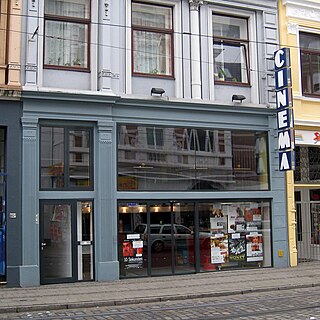
The Cinema im Ostertor, formerly Cinema Ostertor, is a cinema founded on 7 November 1969 as the first art house cinema in Germany on Ostertorsteinweg in Bremen, district of Ostertor, the so-called Viertel.
14. Maschinenhaus am Binnenhaupt
The list of cultural monuments in Bremen-Häfen lists all cultural monuments in the Bremen district of Häfen. This also includes the district of Bremerhaven, which is surrounded by Bremerhaven and has its own table here.
Wikipedia: Liste der Kulturdenkmäler in Bremen-Häfen (DE), Website
15. Haus 43
The KulturAmbulanz is a project of the Klinikum Bremen-Ost in Bremen – Osterholz. It operates the hospital museum, the Haus im Park venue and the Galerie im Park with exhibitions on the subject of medicine and art on the hospital grounds.
16. Zum Storchennest
The Warturm on the Ochtum was part of the Landwehr around the Bremen Vieland as a fortification tower. The tower itself was destroyed in 1813 and demolished in 1820. The associated customs house on the opposite side of Warturmer Heerstraße is now called Gasthaus Zum Warturm Storchennest.
17. Seenotrettungskreuzer Paul Denker
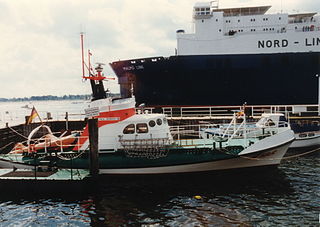
The sea rescue cruiser Paul Denker is a museum ship in Bremen, Germany. It was the first ship of the German Society for the Rescue of Shipwrecked Persons (DGzRS) made entirely of aluminium and at the same time the smallest of all sea rescue units built in Germany with a daughter boat. In total, the cruiser was in the service of the company for 38 years.
18. H.J. Kratschke
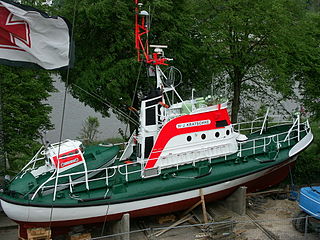
The H.-J. Kratschke is a former rescue cruiser of the German Society for the Rescue of Shipwrecked Persons (DGzRS) of the 19 m class, which was built in 1969 by the shipyard Abeking & Rasmussen in Lemwerder under shipyard no. 6313. The DGzRS internal designation was KRS 03.
19. St. Martini
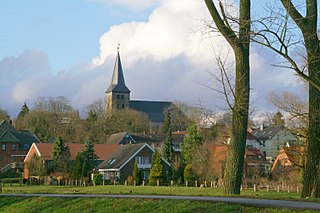
St. Martin's Church is a church building in the Burglesum district of Bremen, Germany. It is located on a hill above the Lesum in the centre of the district of the same name between the streets An der Lesumer Kirche and Hindenburgstraße.
Wikipedia: St.-Martini-Kirche (Bremen-Lesum) (DE), Website, Url
20. Schifferhaus
The Shipper's House in Bremen, Germany is a building in the oldest district of the Free Hanseatic city of Bremen. The house was registered as an historical monument in 1973 and is in Schnoor. During the last 25 years of the 20th century the house was a private museum. It was an attraction for many visitors including the former German Foreign Minister Hans-Dietrich Genscher.
21. Amerikanisches Generalkonsulat
The Consular Agency of the United States in Bremen, also referred to as Consular Agency Bremen, was one of the American diplomatic missions to Germany until 2018. The unit offered limited services for U.S. citizens in areas including Bremen, Hamburg, Schleswig-Holstein, and Lower Saxony. Despite that, services such as the issuing of visas or emergency passports were not provided, but can be obtained only from the U.S. Embassy in Berlin, the Consulate General in Frankfurt or Munich.
Wikipedia: Consular Agency of the United States, Bremen (EN), Website
22. Universität Bremen (ZARM, Fallturm)
Fallturm Bremen is a drop tower at the Center of Applied Space Technology and Microgravity at the University of Bremen in Bremen. It was built between 1988 and 1990, and includes a 122-metre-high drop tube, in which for 4.74 seconds, or for over 9 seconds weightlessness can be produced. The entire tower, formed out of a reinforced concrete shank, is 146 metres high.
23. Simon-Petrus-Kirche
The Simon-Petrus-Kirche is located in the Bremen district of Habenhausen in the district of Obervieland. It is the newest sacred building of the Bremen Evangelical Church according to plans by Will Baltzer from Wuppertal and, together with St. John's Church in the adjacent district of Arsten, forms the Evangelical Parish of Arsten-Habenhausen.
24. Unser Lieben Frauen Kirche
The Church of Our Lady is an Evangelical Protestant church situated northwest of the Market Square in Bremen, Germany. Like Bremen Cathedral, today's building dates from the 13th century. The brightly coloured stained-glass windows are the work of the French artist Alfred Manessier. In 1973, the church was listed under the monument protection act.
25. St. Godehard
The Church of St. Godehard is a Roman Catholic church in Bremen-Hemelingen. It was built between 1899 and 1900 according to a design by the Bremen architects' association of Friedrich Wellermann and Paul Frölich in the style of Neo-Romanticism. The area around the church and rectory has been a listed building since 2000.
26. Meyer am Boom
The Meyer am Boom restaurant was a restaurant in Bremen, Oberneulander Landstraße 8. The restaurant business was given up in 2014 after the traditional inn had been run as a family business for around three hundred years.
27. The Atlantis House
The Atlantis House on Böttcherstraße in the old town of Bremen in the north of Germany is an interesting example of German architecture in the interwar period. Designed by Bernhard Hoetger, it was completed in 1931. After suffering serious war damage, it was rebuilt in 1965 with a new facade designed by Ewald Mataré.
28. Haus des Glockenspiels
The Glockenspiel House is a building in Bremen in the north of Germany. With its 30 bells of Meissen porcelain, the carillon (Glockenspiel) chimes three times a day while wooden panels depicting pioneering seafarers and aviators appear on a rotating mechanism inside the tower.
29. Zentaurenbrunnen
The centaur fountain from 1891 is a fountain in Bremen. Its centrepiece is the bronze sculpture of a horseman fighting with a snake by the sculptor August Sommer. The fountain is now located in Leibnizplatzpark in Bremen's Neustadt district, which borders Leibnizplatz as part of the Neustadtswallanlagen.
30. Bremer Geschichtenhaus
The Bremen Story House in Schnoor is a "living" museum. As part of qualification and employment measures, unemployed people present historical events and personalities of Bremen life in historical settings from the middle of the 17th to the 20th century. In self-made costumes true to the original, they accompany and guide visitors through the exhibition and tell Bremen history and stories.
31. Fatih Moschee
The Fatih Mosque in Bremen-Gröpelingen is the first mosque in the Free Hanseatic City of Bremen and the third largest in Germany. The mosque association, founded in 1973, is also the oldest and largest Muslim community in Bremen. It was registered in 1974 as the "Association for the Preservation of the Islamic Prayer Room in Bremen e. V.".
32. Villa Ichon
The Villa Ichon in Bremen (Mitte) in the Ostertorviertel at Goetheplatz 3 and on the Bremen Wallanlagen, dates from 1849 and is known nationwide as a forum for cultural and peace work. On the other side of the building is now the Theater am Goetheplatz.
33. Haus Vorwärts
The Haus Vorwärts at Sandstraße 4–5, right next to Bremen Cathedral, is one of the oldest buildings in Bremen's old town. Since 2005, the building has served as the House of Science for the association of the same name as a showcase for science. Previously, the Vorwärts association had its domicile here for over 120 years.
34. Dom-Museum
The Cathedral Museum in Bremen's St. Peter's Cathedral is an ecumenical museum for Bremen church history, which was founded in 1987 to record finds from the medieval bishops' tombs of the cathedral. It is under the sponsorship of the Bremer Dom e. V. Foundation.
35. Haus Riensberg
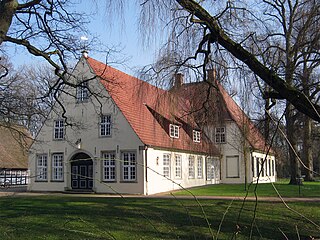
The Riensberg estate is a historic estate with a park in Bremen-Schwachhausen, at Schwachhauser Heerstraße No. 240, which is now part of the Focke Museum. The Riensberg House has been a listed building since 1973.
36. Mahnmal für die Opfer der Novemberpogrome 1938
The memorial to the victims of the November pogroms of 1938, in which five Jewish citizens were murdered by the National Socialists in Bremen, has stood since 1982 near the Landherrnamt building in Bremen-Mitte on the corner of Dechanatstraße and Am Landherrnamt. The memorial was designed by Hans D. Voss and consists of black-painted, panel-like concrete cubes.
Wikipedia: Mahnmal für die Opfer der Novemberpogrome 1938 (Bremen) (DE)
37. Gerhard-Marcks-Haus
The Gerhard Marcks Museum or Gerhard Marcks House is a museum in Bremen, Germany, inspired by the work of the sculptor and graphic artist Gerhard Marcks. The museum exhibits contemporary sculpture, including the work of Marcks.
38. Schnürschuh Theater
The Schnürschuh Theater is an independent theatre in Bremen, Germany, founded in 1976. After the original theatre group and the later permanent ensemble initially played at changing locations in Bremen and on tours throughout Germany, it has had its own venue since 1994: The theatre house of the Schnürschuh Theater has since been located in Bremen's Neustadt at Buntentorsteinweg 145. The auditorium has 99 seats.
39. Bremer Loch
The Bremer Marktplatz is a square situated in the centre of the Hanseatic City of Bremen. One of the oldest public squares in the city, it covers an area of 3,484 m2 (37,500 sq ft). It is no longer used as a market place except for the Christmas market and the annual Freimarkt Fair at the end of October.
40. Reiterstandbild Otto von Bismarck
The Bismarck monument outside the cathedral in Bremen is a bronze figure of the former Chancellor, riding a horse. It was created in 1910, twelve years after Bismarck's death. The commission was entrusted to Adolf von Hildebrand in 1904. Since 1973 the monument has enjoyed protected status.
41. Paula-Becker-Modersohn-Haus
The Paula Modersohn-Becker Museum in Bremen, Germany, is the first museum in the world devoted to a female artist. Modersohn-Becker (1876–1907) was one of the most important early Expressionists, and the museum features key works from each of her creative periods.
42. Herold
The heralds at Bremen's town hall are free sculptures of two armoured knights on horseback. The groups of figures, almost larger than life and embossed in copper, flank the east portal of Bremen's Old Town Hall. They are traditionally referred to as "heralds". Designed by Rudolf Maison and donated by the banker John Harjes, they were first erected at this location in 1901.
43. Agnes-Heineken-Denkmal
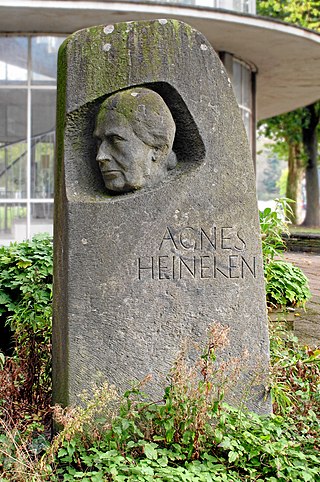
The Agnes Heineken Monument is a monument made of natural stone in Bremen-Mitte, at the Bremen Vocational Training Centre, which was erected in 1957 in honour of the Bremen educator Agnes Heineken (1872–1954).
44. Köpkenstift
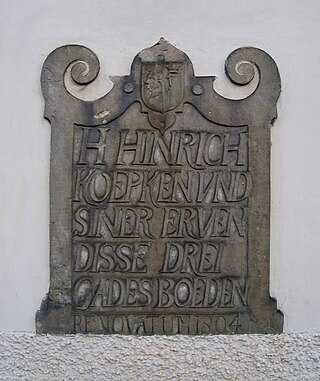
The Gottesbuden Foundation, also known as the Senator Heinrich Köpken Foundation, founded in 1564, is the second oldest of the 342 foundations in the state of Bremen. It is based at Friesenstraße 48.
45. Torhäuschen
Original parts of the Bishop's Gate in Bremen, which was given its present shape in 1838 according to a design by building director Friedrich Moritz Stamm, are included in the reconstruction of the old square in the ramparts as well as essential parts at the entrance to the Egestorff Foundation in Bremen-Osterholz. At the same time, the associated gatehouse, which has served as a shop since 1848, was built on the bridge over the moat.
46. Jugendfreizeitheim Farge
The Farge youth centre, also known as Freizi Farge, in Bremen-Blumenthal, district of Rekum, Rekumer Straße 2, dates from 1939. The single-storey clinker brick building with the thatched gable roof with bat dormers and a central gable entrance is 53.7 m long, 10 m wide and 9.4 m high. It was built in the conservative homeland style according to plans by Eduard Scotland and has been a Bremen listed building since 1986.
47. Kriegsgefangenendenkmal
Herbert Kubica's prisoner of war memorial in Bremen's ramparts was dedicated in 1934 to the soldiers of the First World War who died in captivity. Since 1951, an extension of the inscription has also commemorated the prisoners of war of the Second World War.
48. Schulmuseum Bremen
The Bremen School Museum is a collection of school history in the Hastedt district of Bremen. It is operated by the supporting association "Schulmuseum Bremen e. V.", which maintains a cooperation with the Senator for Children and Education. The museum is housed in the Auf der Hohwisch school.
49. Haus der Stadtsparkasse
Haus der Stadtsparkasse is a Rococo landmark on the "Marktplatz" in Bremen, Germany. It was completed in the 1950s combining the historic front gable from another site with the more recent architecture of the remainder of the building.
50. Kriegerehrenmal Altmannshöhe
The memorial for the Bremen soldiers who died in 1914–1918, the fallen of the Gerstenberg Division and the Freikorps Caspari stands on the Altmannhöhe at the eastern foothills of the Bremen ramparts. It was designed in 1933 by the sculptor Ernst Gorsemann and the landscape architect Heinrich Wiepking-Jürgensmann and inaugurated in 1935.
Wikipedia: Ehrenmal für die im Ersten Weltkrieg gefallenen Bremer (DE), Website
51. Sterbender Jüngling
The Dying Youth is a bronze statue created in 1936 by Herbert Kubica, which was originally erected in the centre of Bremen's old town during the Nazi era as a heroic monument to the members of the Freikorps Caspari and the Gerstenberg Division who died in the fight against the Bremen Soviet Republic.
52. Ägina
The larger-than-life bronze figure of the Large Reclining or Aegina by Gerhard Marcks, cast in 1966, was erected in 1968 on the slope of the Theaterberg in Bremen's ramparts as one of the first sculptural enrichments of the period after the Second World War. Inspired by Günter Busch, the director of the Kunsthalle, Bremen had turned its attention to the work of Marcks, perhaps the most important figurative sculptor in Germany in the post-war years, with the founding of a sculpture museum dedicated to his work and named after him, as well as two publicly displayed free sculptures.
53. Ev. Kirche St. Jacobi
The church of St. Jacobi in the Bremen district of Seehausen, Seehauser Landstraße 168, is the parish church of the Evangelical Lutheran community and one of the oldest Gothic sacred buildings in the Hanseatic city. In 1973, the church was placed under monument protection.
54. Körner-Denkmal
The bronze monument on the Theodor-Körner-Wall in Bremen for the poet and fighter in the Wars of Liberation was donated by citizens of the Hanseatic city and erected in 1865. It has been a listed building since 1973.
55. Rhododendronpark
The Rhododendron-Park Bremen, also known as the Rhododendron-Park und Botanischer Garten Bremen, is the biggist collection of rhododendrons and azaleas worldwide, as well as a substantial botanical garden, located in Bremen, Germany. It is open daily; park admission is free but a fee is charged for the nature center Botanika.
56. Ludwig-Knoop-Statue
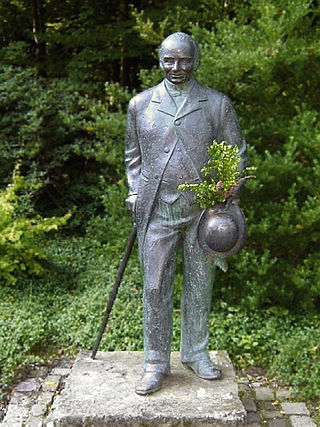
The Ludwig Knoop Statue, sometimes also called Baron Ludwig Knoop or Baron Knoop for short, is a bronze statue in Bremen-Burglesum in Knoops Park, which was erected in 1995 in honor of the Bremen merchant Ludwig Knoop (1821–1894) and on the occasion of the 100th anniversary of his death last year. It is listed in the list of monuments and statues of the city of Bremen.
57. Die Zigarrenmacher
The monument to the Bremen cigar makers, a bronze sculpture group of five half-figures, was modelled by Holger Voigts in 1984 and erected on the corner of Buntentorsteinweg and Kirchweg. It is a reminder of an important profession of the residents who worked here in the Neustadt in the 19th century.
58. Gymn. Oberstufe am Leibnizplatz
Barracks IV of the "Bremen" Infantry Regiment in Bremen, Neustadt district, Neustadtscontrescarpe 49/51 and Schulstraße 11 was built around 1890. In 2010, Barracks IV was placed under monument protection.
Wikipedia: Kaserne IV des Infanterieregiments Bremen (DE), Website
59. Focke-Museum
The Focke Museum is the museum of history and the history of art for the city and state of Bremen. It was formed in 1924 by the merger of a museum of industry and commerce and the previous historical museum, and is named for the founder of the latter, Johann Focke (1848–1922), a Bremen privy councillor and father of Henrich Focke. It is located in 4.5 hectares of grounds in the Riensberg neighbourhood of the city. In addition to a main building which opened in 1964 and was extended in 2002, the museum complex includes buildings dating from the 16th to the 19th centuries.
60. Haus Lesmona
Haus Lesmona is a villa-like building in Bremen-St. Magnus. It is located on the high bank of the Lesum River in the southwest corner of today's Knoops Park and is currently used as a residential building and gallery. The name refers to the Latinized name for the river Lesum, namely Lesmona. House Lesmona has been a listed building as an individual monument since 1973 and has belonged to the Knoops Park monument group since 2010.
61. Mühle Oberneuland
The Oberneulander Mühle is a windmill in the Oberneuland district of Bremen, Germany. Since 1973, it has been listed as an individual monument in the state monument list of the Free Hanseatic City of Bremen.
62. Robinson-Crusoe-Haus
Robinson Crusoe House is a stepped-gabled house on Böttcherstraße in the old town district of Bremen, Germany. It was built by the prosperous coffee merchant Ludwig Roselius who admired the pioneering spirit of Daniel Defoe's fictional hero Robinson Crusoe.
63. Hofmeierhaus
The Bremen Ecology Station is an environmental education centre for children, young people and adults in Bremen. It is located on the Lamotte estate in Bremen, Vegesack district, Schönebeck district, Am Gütpohl 11.
64. Spitzen Gebel
Spitzen Gebel is a historic building in the centre of Bremen, Germany, located at No. 1, Hinter dem Schütting. Its origins date to the year 1400, but it was rebuilt in the Gothic style in 1590 with additions in 1610. Since 1973, it has been a listed building.
65. St. Markus
The Protestant St. Mark's Church in Bremen, Obervieland district, Kattenturm district, Arsterdamm 12–16, was built in 1955 according to plans by Fritz Brandt. The building has been a Bremen listed building since 1995.
66. Roseliushaus
The Ludwig Roselius Museum on Böttcherstraße in the old town of Bremen, Germany, houses the private collection of the successful coffee merchant Ludwig Roselius (1874–1943). Artefacts from the Middle Ages to the Baroque period are on display. The house itself which was completed in 1588 has a history going back to the 14th century.
67. H. W. M. Olbers
The monument to Heinrich Wilhelm Olbers, the important Bremen physician and astronomer, was created by the sculptor Carl Steinhäuser in Rome in 1848. It was erected in 1850 in the Bremen ramparts. The property has been a listed building since 1973.
68. Wätjens Park
Wätjens Park, also called Wätjens Landgut or Wätjens Garten, is a landscape park around Wätjens Castle with former farm buildings and other buildings in the Bremen districts of Blumenthal and Vegesack.
69. Ev.-reformierte Kirche Rekum
The Evangelical Reformed Church in Rekum, a district of Bremen-Blumenthal, is the place of worship of the Evangelical Reformed congregation of Rekum. The church building, built in 1956, stands in the middle of the district, at Pötjerweg 75.
Wikipedia: Evangelisch-reformierte Kirche (Bremen-Rekum) (DE)
70. Mausoleum Knoop
The Knoop Mausoleum is located in Bremen, Walle district, Walle district, Im Freien Meer 32, in the Waller cemetery. It was built by 1880 according to plans by the architect Gustav Runge and the sculptor Diedrich Samuel Kropp.
71. Theater am Goetheplatz
The Theater am Goetheplatz, also incorrectly known as the Goethetheater, is the main theatre of the city of Bremen in the north of Germany, the main venue of Theater Bremen. Completed in 1913 in the Neoclassical style, it is located in the cultural district to the east of the old town. After reconstruction with major extensions after the Second World War, it was fully modernized in 2004. Since 2005, it has been a listed building.
72. Raupe

Caterpillar is a light sculpture in Bremen. It is located in Bremen-Mitte at Präsident-Kennedy-Platz at the Bremen State Archives and is listed in the list of monuments and statues of the city of Bremen.
73. Nikolaikirche Oslebshausen
The Protestant St. Nicholas Church Oslebshausen in Bremen, district of Gröpelingen, district of Oslebshausen, Ritterhuder Heerstraße 1 / Oslebshauser Heerstraße, was built in 1930 according to plans by the architect and cathedral master builder Walter Görig.
74. Haus der Sieben Faulen
The House of the Seven Lazy Brothers is a historic building in Bremen, Germany, completed in 1927. With a name based on a local legend, the building located in Böttcherstraße in the old town was built by the prosperous coffee merchant Ludwig Roselius to a design by Bremen architects Eduard Scotland and Alfred Runge. The first version of the house was home to the advertising department of Roselius's coffee company and the Deutscher Werkbund association of craftsmen. When it was rebuilt in 1954 the new design was based on a traditional local story.
75. Landhaus Caesar-Ichon
Ichons Park and Landhaus Caesar-Ichon are located in Bremen, Oberneuland, Oberneulander Landstraße 70. The park was built in 1768 and 1829, the building in 1843 according to plans by Anton Theodor Eggers. They have been under Bremen monument protection since 1973.
Wikipedia: Ichons Park und Landhaus Caesar-Ichon (DE), Website
76. Botanika
Botanika is an indoor botanical garden with science center, in the Rhododendron-Park Bremen. The greenhouses opened in the year 2003 and show primarily azaleas and rhododendrons. Together with the surrounding park, it contains the largest rhododendron collection in the world, featuring roughly 650 species and 3500 varieties.
77. Haus Kränholm
Haus Kränholm is located in Bremen, Burglesum district, St. Magnus district in Knoops Park, Auf dem Hohen Ufer 35A / Raschenkamsweg. The building was built in 1971 as a reconstruction of a manor house built elsewhere in 1896/1897 according to plans by Eduard Gildemeister and Wilhelm Sunkel and demolished for the construction of an expressway. It has been a listed building since 2010 as part of the Knoops Park monument group.
78. Friedhofskapelle Riensberg
The Riensberg Cemetery Chapel is located in Bremen, Schwachhausen district, Riensberg district, Friedhofstraße 51. The chapel, the cemetery overseer's house and the mortuary were built in 1875 according to plans by building inspector Johannes Rippe. They have been under Bremen monument protection since 1984.
79. Gasthof zum Kaiser Friedrich
The Gasthof zum Kaiser Friedrich in Bremen in the Schnoor district, corner of the streets Lange Wieren and Am Landherrnamt is a restaurant named in memory of Emperor Frederick III, the 99-day emperor.
80. St. Marien Blumenthal
St. Marien is a Catholic church in Bremen, Germany. It is named after St. Mary and is located on Fresenbergstraße in the Blumenthal district. St. Mary's Church is the oldest church in the deanery of Bremen-Nord; her parish of the same name, to which almost 5,000 Catholics belong, belongs to the Diocese of Hildesheim.
81. Schule An der Brinkmannstraße
The school on Brinkmannstraße is located in Bremen, Hemelingen district, Hemelingen district at Brinkmannstraße 40 and Hemelinger Heerstraße. The building was built in 1909 according to plans by Reinhard Ahlemann and was rebuilt in 1931 according to a design by Otto Conrad Friedrich Bräutigam.
82. Hastedter Kirche
The Alt Hastedter Church in Bremen, district of Östliche Vorstadt, district of Hulsberg, Bennigsenstraße No. 7 / Bismarckstraße, was built in 1862 according to plans by Wilhelm Weyhe. This building has been a listed building in Bremen since 1996.
83. Haus Mindestroemmen
The house Mindeströmmen is located in Bremen, district Burglesum, district Lesum, Lesmonastraße 70. The house was built in 1903 according to plans by Friedrich Wellermann and Paul Frölich. It has been a Bremen listed building since 1995.
84. Kleiner Roland
The Little Roland Monument, also known as the Roland Fountain, stands in Bremen's Neustadt district, at the southern end of the Neuer Markt. It is listed in the list of monuments and statues of the city of Bremen.
85. Beim Bade

The bathhouse fountain with the sculpture Beim Bade, also known as The Merry Bathers, is located in Bremen-Mitte in the Schnoor, on the Stavendamm near the Schifferhaus. It is listed in the list of fountains of the city of Bremen.
86. Haus Schwalbenklippe
The house Schwalbenklippe is located in Bremen, district Burglesum, district Lesum, Admiral-Brommy-Weg 5. The residential building was built by 1905 according to plans by Friedrich Wellermann and Paul Frölich.
87. Haus Tannenberg
Haus Tannenberg, Landhaus Loose is located in Bremen, Burglesum district, Lesum district, Benbeckenstraße 19. The residential building was built until 1852 and then in 1861 according to plans by building director Alexander Schröder. It has been a Bremen listed building since 1995.
88. Pablo Neruda
The bronze bust of Pablo Neruda in Bremen-Horn-Lehe on the campus of the University of Bremen, Enrique-Schmidt-Straße was erected in 2014 as a foundation of the Republic of Chile and is included in the list of monuments and statues of the city of Bremen.
89. Steinernes Kreuz
The Vasmer Cross is a cross of atonement in the Mitte district of Bremen, district of Ostertor, on the street Beim Steinernen Kreuz No. 10. It was erected in 1435 as a memorial of atonement for the execution of Bremen's mayor Johann Vasmer. The property has been a listed building since 1973 as part of the Beim Steinernen Kreuz ensemble. It is the oldest monument in Bremen after Roland.
90. Fernsprechamt Hansa
The former telephone exchange "Hansa" in Bremen - Östliche Vorstadt, district of Hulsberg, Friedrich-Karl-Straße 55/corner of Bismarckstraße, is an administrative building. It is a listed building.
91. Skulpturengarten
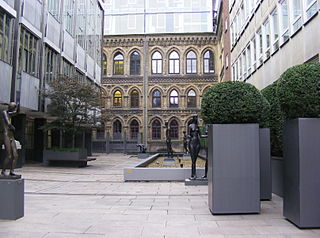
The sculpture garden of the Bürgerschaft is located in Bremen in the Mitte district on Bremen's market square to the right of the Haus der Bürgerschaft. It can be visited during the opening hours of the Bremen Parliament.
92. Windobjekt
The Wind Object in Bremen is a sculpture that stands in the Mitte district on the Weser near the Wilhelm-Kaisen-Brücke/Tiefer near the Schnoor old town district. It is listed in the list of monuments and statues of the city of Bremen.
93. Sitzendes Paar
The sculpture Seated Couple stands in Bremen's Neustadt in the green area on Schulstraße at the corner of Neustadtscontrescarpe, near Leibnizplatz, which is part of the Neustadtswallanlagen. It is listed in the list of monuments and statues of the city of Bremen.
94. Villa Oesselmann
The Villa Oesselmann is located in Bremen, district Gröpelingen, district Lindenhof, Waltjenstraße 140. It was built by 1888 according to plans by Albert Dunkel and H. Juchter (construction management).
95. Haus St. Petrus
St Petrus House is a historic building in Bremen, Germany. With features of North-German Gothic architecture including an arcade, it was built in 1927 by the prosperous coffee merchant Ludwig Roselius as part of his development of Böttcherstraße. Today its newly refurbished dining rooms are part of the Atlantic Grand Hotel. Since 1973, St Petrus House has been a listed building.
96. Schöpfwerk Lesumbrok
The Lesumbrok pumping station is located in Bremen, Burglesum district, Werderland district, Lesumbroker Landstraße 122 on the Lesumdeich. It was built until 1872 according to plans by Friedrich Rudolph Theodor Berg, Chief Planning Director and Hydraulic Engineering Director of the Bremen Building Department.
97. Der Tröpfler
The fountain with the sculpture Der Tröpfler "Il gocciolatoio" is located in Bremen - Mitte on Marktstraße in front of the entrance to the Börsenhof. It is listed in the list of fountains of the city of Bremen.
98. Pfarrhaus Wasserhorst
The Wasserhorst parsonage is located in Bremen-Blockland, Wasserhorst 4, opposite the Evangelical Church Wasserhorst. The house was built in 1901/02 according to plans by master carpenter Johann Lürssen from Ritterhude.
99. Haus Hoogenkamp
Haus Hoogenkamp, formerly Landhaus Hucke, is located in Bremen, Oberneuland district, Oberneulander Landstraße 33. It was built in 1825 according to plans by master builder Hinrich Kaars. It has been a Bremen listed building since 1973.
100. Fragment
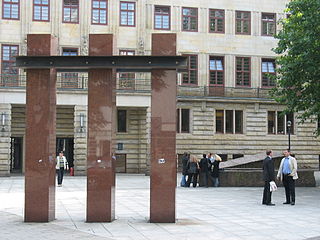
The fragment is a sculpture ensemble in Bremen-Mitte, on Rudolf-Hilferding-Platz near the House of the Reich, which was erected in 1991 on the 50th anniversary of Rudolf Hilferding's death. It is listed in the list of monuments and statues of the city of Bremen.
Share
Disclaimer Please be aware of your surroundings and do not enter private property. We are not liable for any damages that occur during the tours.
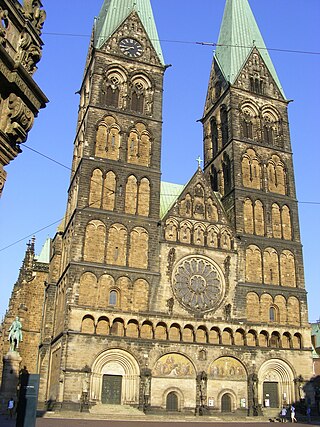


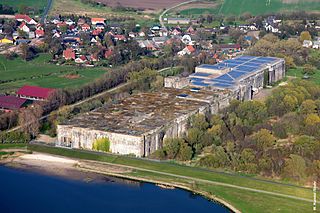
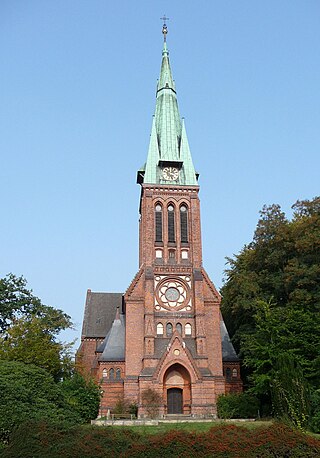
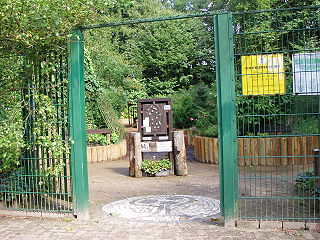
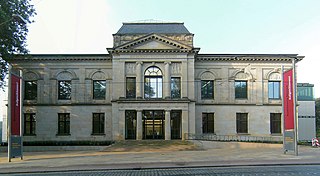
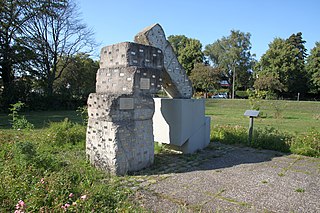
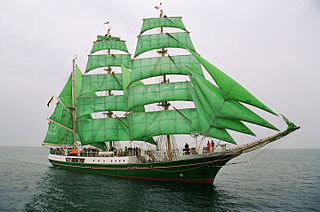
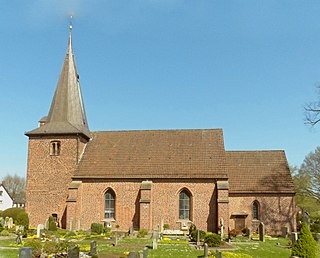
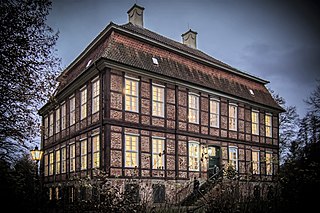
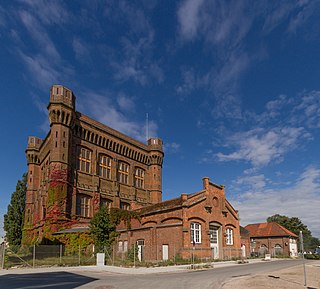

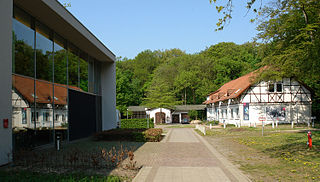
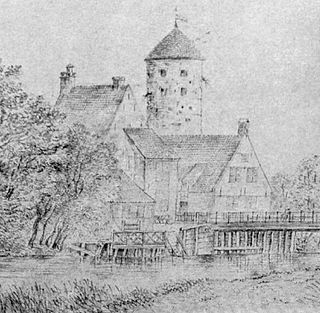
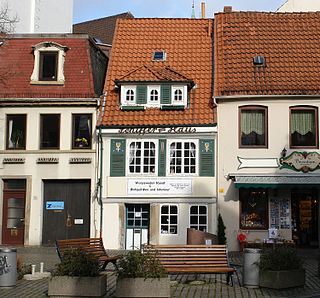
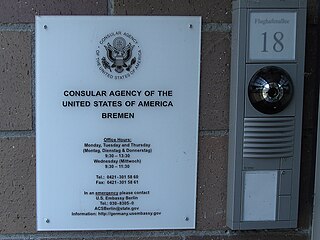
.jpg)
